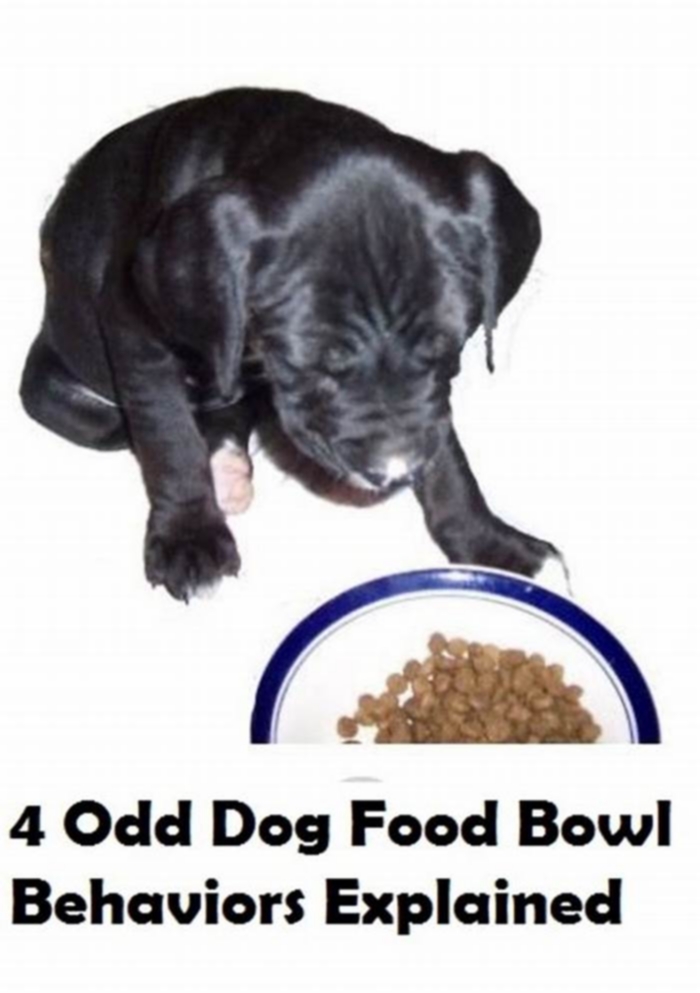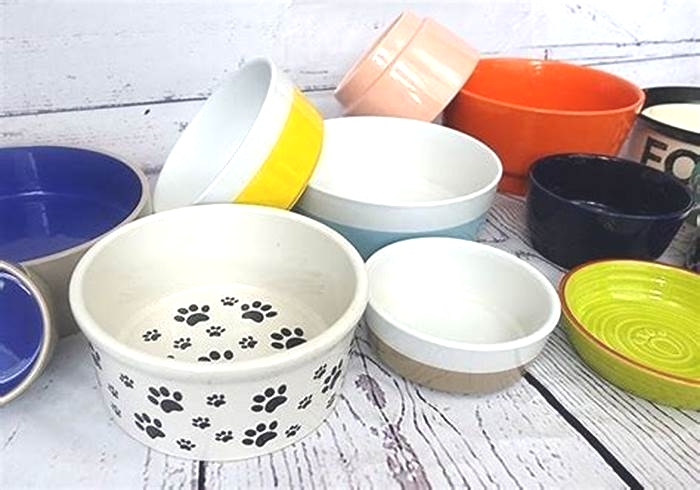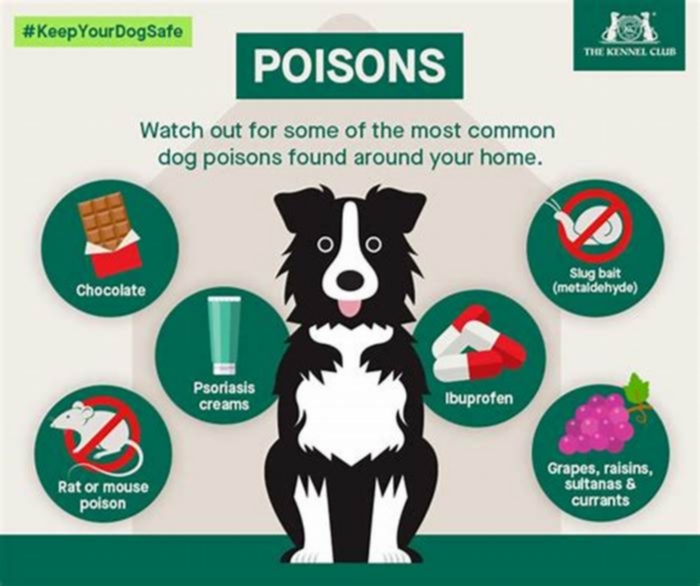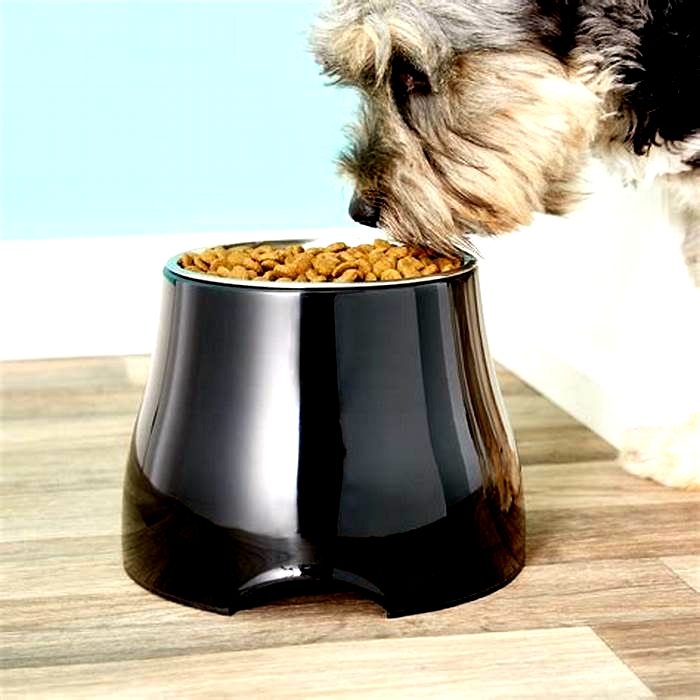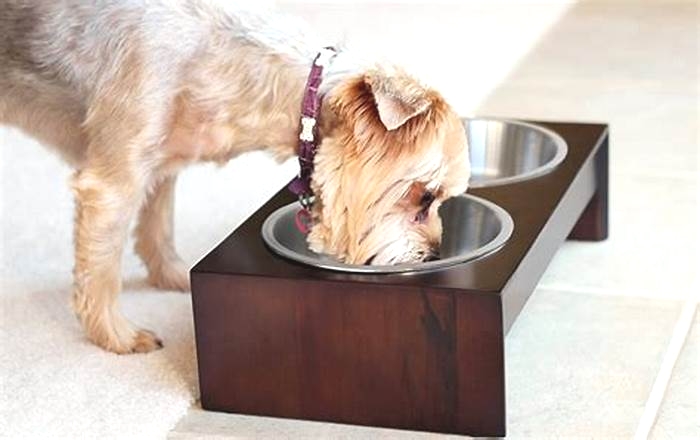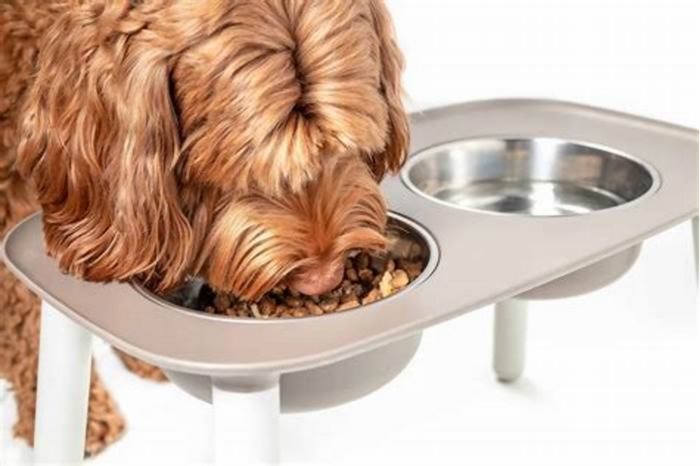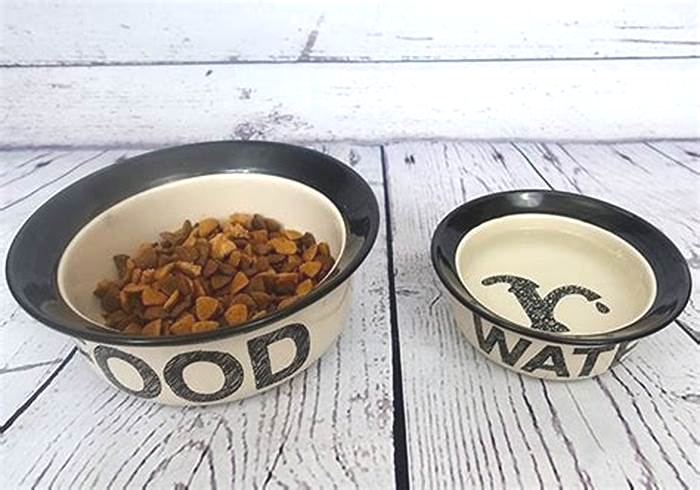Why are metal bowls better for dogs
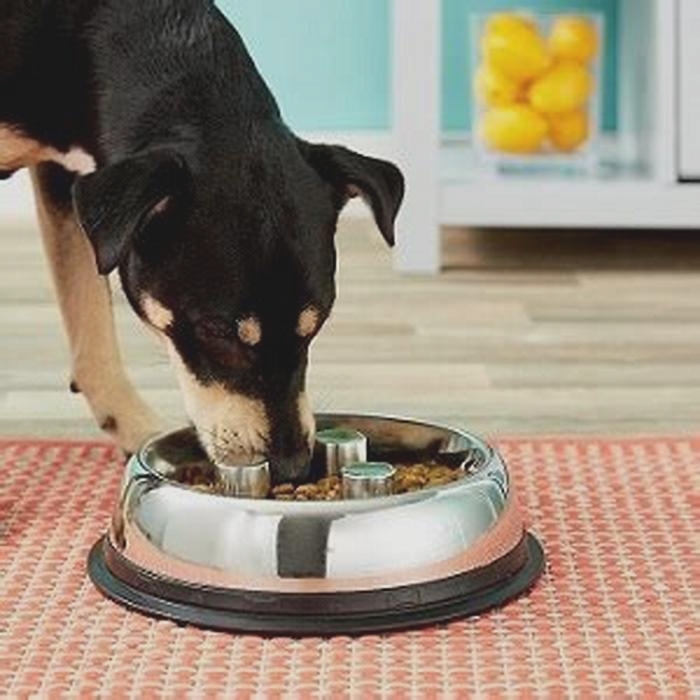
The Effects of Stainless Steel Bowls on Dogs
When it comes to choosing dog bowls for your pup, you'll be met with a wide variety of size, style and material choices. In addition to selecting a bowl that that will hold an appropriate volume of food to meet your dogs needs as he grows, other factors come into play. Stainless steel bowls offer a wide range of pros compared with other types of dog dishes.
Durability
Stainless steel bowls are durable and rust-proof, and can stand up to even the most ambitious chewing dog. If your pup has been known to destroy plastic bowls in the past, give stainless steel a try. You'll save your dog from the potential of cut tongue, gums and paw pads, which can occur if your dog tries to rip apart a plastic bowl and ends up getting caught on sharp edges.
Safety
Dog food particles can get caught in cracks and crevices of scratched plastic bowls as well as in chips and cracks of ceramic bowls. If not cleaned and disinfected very carefully, bacteria can build up in these areas and make your dog sick. Stainless steel bowls are extremely hygienic and easy to clean using regular dish-washing soap.
Noise
Stainless steel bowls can be noisy of your pup likes to pick them up, drop them or clang them around. Look for weighted bowls and/or bowls with a rubber ant-slip pad around the bottom to hold it in place. A lipless stainless steel bowl will help keep your dog from walking off with his bowls and hiding them.
No Chemicals
Many molded plastic bowls are manufactured with chemicals, which can expose your dog to dangerous toxins over time. Some dogs have allergies to certain plastics. Stainless steel bowls don't present this hazard, promoting a positive long-term impact on your pets overall health and well-being.
Heat/Cold
While stainless steel dog bowls have a lot of benefits, you need to be aware of a few drawbacks. During warm months, water left outside in a stainless steel bowl will get hot faster than water in some other bowls and therefore the water may not be as refreshing to your dog -- meaning he'll drink less, and that's a bad thing. Concurrently, stainless steel bowls used outside in winter have the potential to be extra cold and will harden wet foot to the bowl, making it more difficult for your dog to access and less likely he'll drink enough water.
Stainless Steel vs Ceramic Dog Bowls: Which Is Right for Your Needs?
A good dog bowl is an essential purchase when you own a pet. Size and shape can vary, but each pet will need a place to eat. However, some materials like plastic can leak harmful chemicals into the food and scratch easily, allowing bacteria to form and grow. Some metals can rust, which will ruin the bowl and add iron oxide to the food. Stainless steel and ceramic are also popular materials often used to make dog bowls, and we are going to look at each to see which one is better. Keep reading to make sure you get the best food bowl for your pet.

Overview of Stainless Steel Dog Bowls
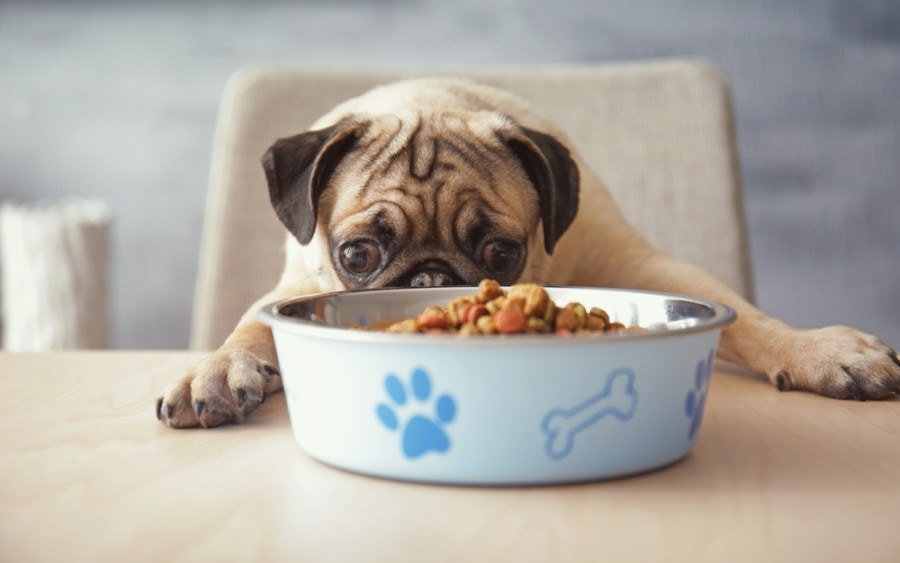
What is stainless steel?
Stainless steel is an iron alloy made by mixing iron with carbon, nitrogen, aluminum, silicon, nickel, and more to give it a wide variety of properties. It must contain at least 11% chromium to be stainless steel, and this ingredient prevents it from rusting and also allows it to be more heat resistant. Adding more chromium or nickel will increase its rust resistance. Since the stainless steel does not rust or scratch easily, it makes an excellent dog bowl.
The only real downside to stainless steel is that it doesnt hold paint well, so its usually not very fancy unless its in a larger base plastic base.
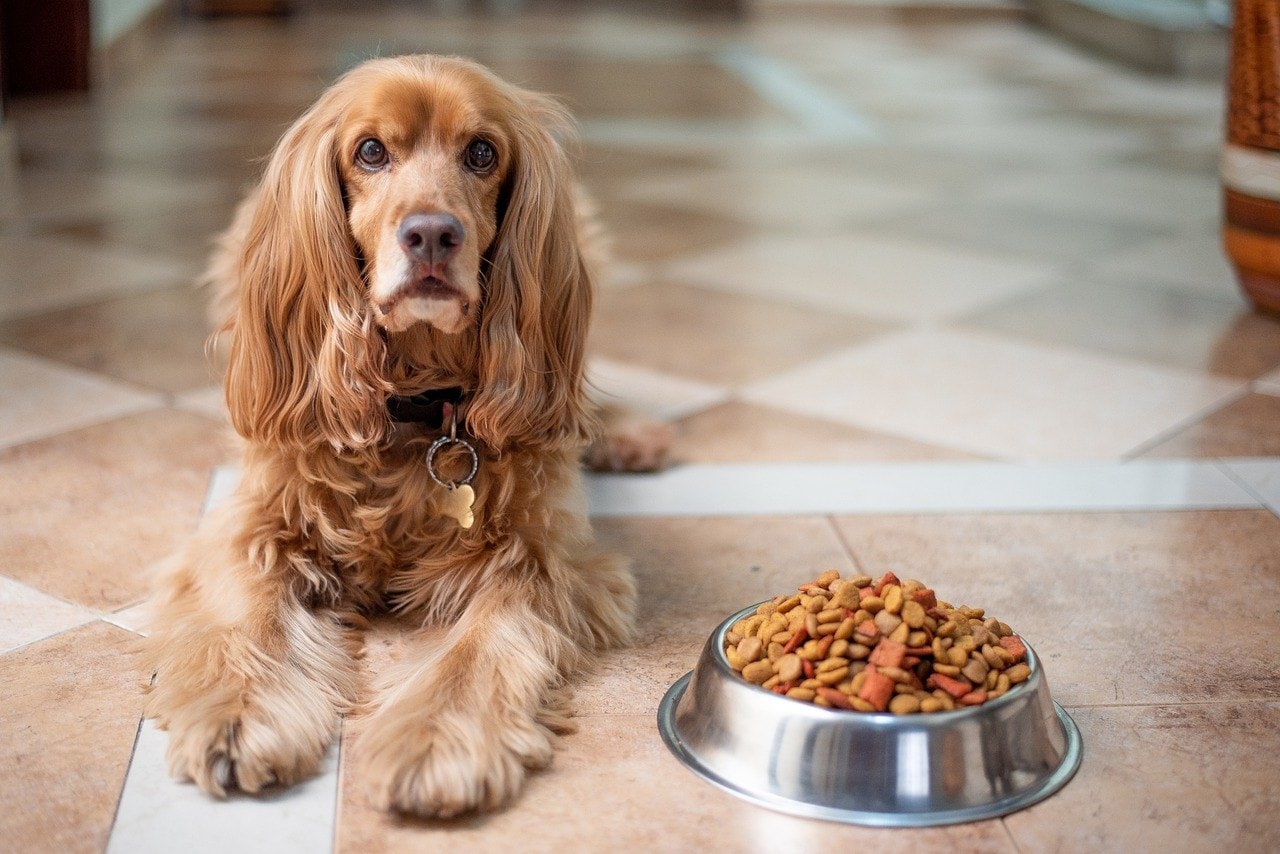
When do I use stainless steel?
Stainless steel makes a great choice as a dog bowl, and there are very few downsides. As we mentioned, it does not rust, so its suitable for indoor and outdoor pets. It wont add any chemicals to the water or change the flavor, and it wont scratch, so bacteria cant grow on the surface. Its also nearly indestructible and will likely last several years.
Pros
- Durable
- Bacteria resistant
- Easy to clean

Overview of Ceramic Dog Bowls
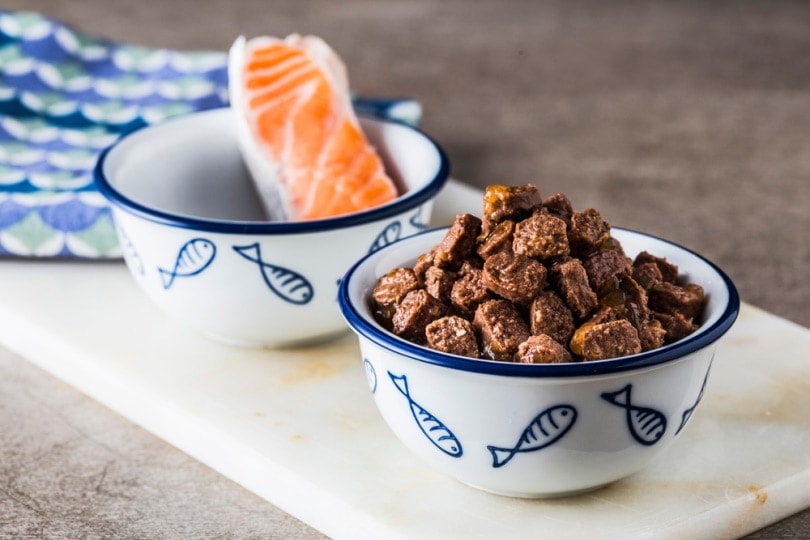
What is ceramic?
Ceramic pottery is a baked clay that becomes very hard when exposed to high temperatures. People may also refer to this material as earthenware, stoneware, or porcelain. Many home dishes use a similar material and many toilets, as well as vases and statues. The hard surface can be very smooth and resistant to scratching, so, like stainless steel, its easy to clean and will not allow bacteria to grow. It will not leak any chemicals into the food, nor will it change the flavor.
The primary downside to ceramics is that its hardness makes it brittle, so its easily broken by handling them roughly or dropping them.
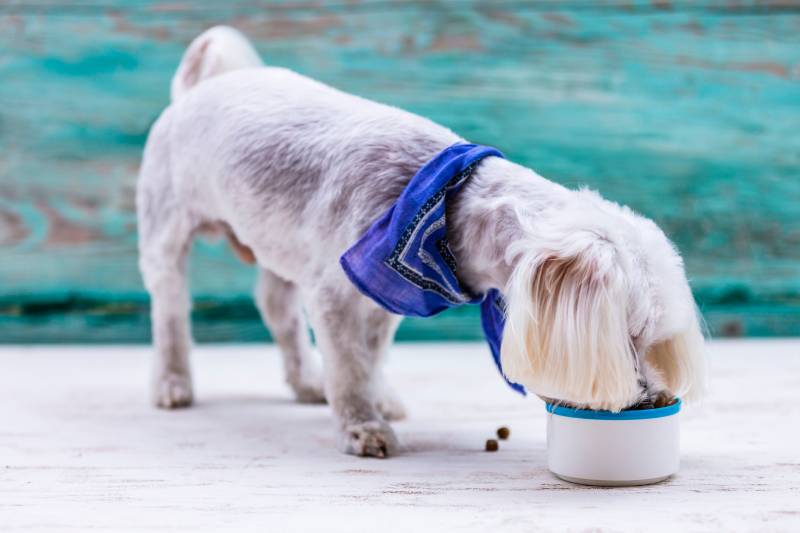
When do I use ceramic?
Ceramic dog bowls make an excellent choice for most homes, and due to their heaviness, they are especially useful for dogs that like to push the food bowl around while they eat. These bowls are often highly decorated, and there are plenty of patterns and colors to choose from, so you are sure to find one that accents your kitchen. There is no worry about rusting, and it will last a lifetime if you dont drop it.
The downside to ceramic is its brittleness, which makes it easy to break or crack. The decorative coating also tends to ship off after repeated washings, decreasing its attractiveness. The decorative colors and patterns can also increase the bowls cost, and its weight can increase the price of shipping it to your home.
Pros
- Hard surface
- Decorative appearance
- Easy to clean
- Reduces sliding
When to Use Stainless Steel
- Main dog bowl
- Secondary dog bowl
- Less expensive
- More durable
When to Use Ceramic
- Main dog bowl
- Secondary dog bowl
- Pets that push the bowl
- More attractive
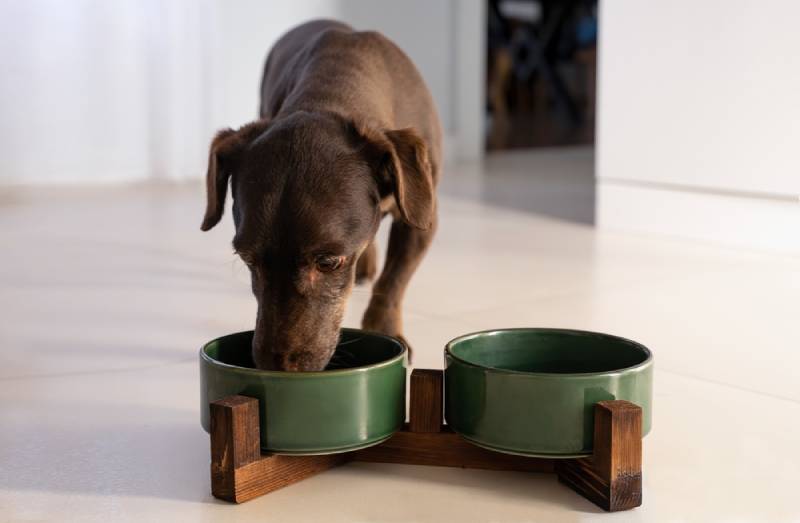

Conclusion
We recommend the stainless steel dog bowl for most people because its easy to clean and nearly indestructible. Its lightweight, inexpensive and suitable for indoor and outdoor use. You are also more likely to find one at your local store that you are a ceramic bowl. Its not that we dont like ceramic bowls. Ceramic is also great, and many people will prefer them, but they require a little more care than you dont handle them roughly, and they are not as easy to find and tend to be more expensive. However, if you have just redesigned your kitchen to be color-coordinated, the ceramic bowl is likely what you need.
We hope you have enjoyed looking over these popular materials to make dog bowls and have decided what type you would like to use. If we have helped your pet have a happier mealtime, please share this look at stainless steel and ceramic dog bowls on Facebook and Twitter.
Plastic vs Metal Dog Bowls: Which Is Right for Your Needs?
One of the first things most people get for a new dog is a food bowl, but with so many different types available, it can be challenging to know which type is best to buy. If you wonder if there is any difference between plastic and metal bowls beside the obvious, youve come to the right place!
Well take a closer look at these two common materials to see if there is any benefit to using one over the other to help you make the smart choice for your pet.

Overview of Plastic Dog Bowls
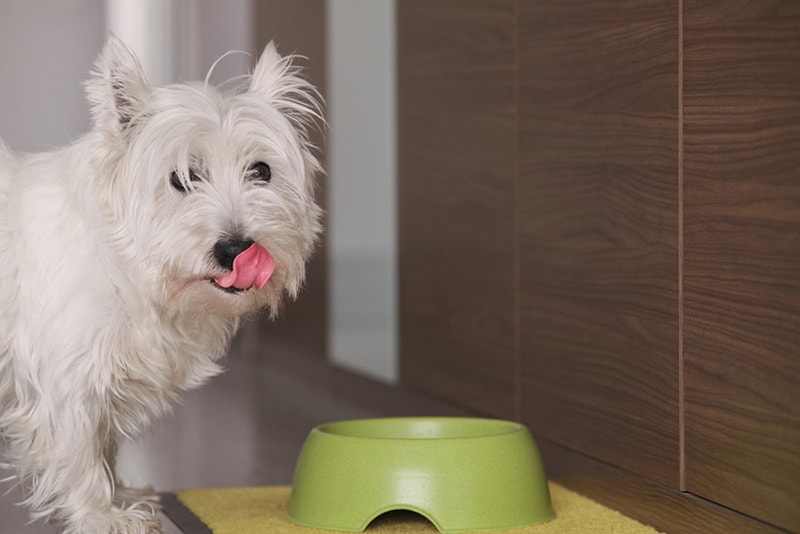
What Is Plastic Good For?
Plastic dog bowls are extremely easy to find, and you can find one in almost any store that supplies even the most basic pet supplies. Plastic is easy to form, so you can find them in almost any shape, including double bowls. Since plastic is so common, these bowls will be the least expensive, and they are also extremely lightweight. There are several kinds of plastic available, each with slightly different properties, and some can be quite durable.
However, it will not be as durable as metal, but you wont need to worry about rusting.
There are a few problems with using plastic for a dog bowl. One downside is that it can leak BPA and other harmful chemicals into the food, which can be bad for your pets health and the environment. It can also change the flavor of water if left too long, and some dogs might decide to chew on the bowl, destroying it and ingesting the pieces.
Another problem with plastic is that it scratches easily, and even tiny shallow scratches can allow bacteria to grow, leading to health issues in your pet.
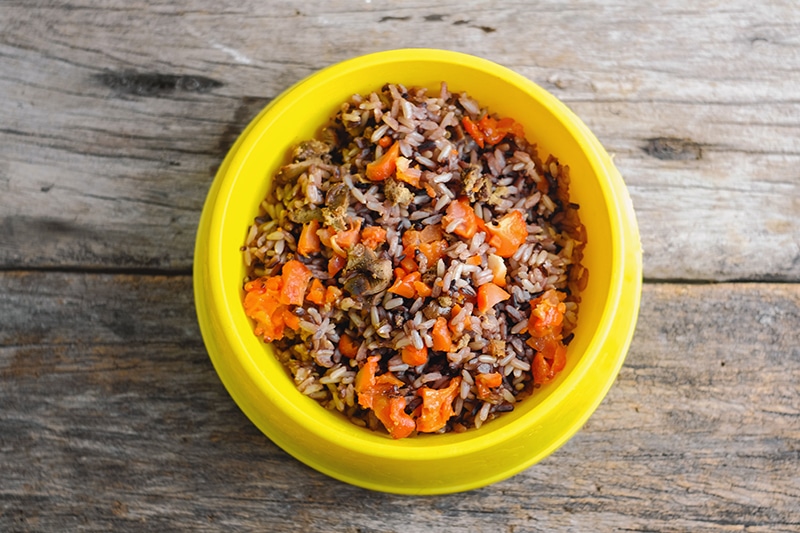
When to Choose Plastic
Plastic dog bowls make a good temporary bowl for feeding your pet someplace you dont normally visit or on a long hike. Its lightweight and easy to carry with you. Since it wont rust, plastic makes a great option for a bowl that will sit unused for a long time.
However, because it can leak harmful chemicals into food that will sit for a few hours, we dont recommend plastic as its primary dinner bowl
Pros
- Inexpensive
- Any shape available
- Easy to find
Cons
- Not as durable
- Might leak harmful chemicals
- Harbors bacteria

Overview of Metal Dog Bowls

What Is Metal Good For
Metal dog bowls are typically much more durable than plastic ones, and dogs dont usually chew metal as often as plastic, though they might still carry the bowl around with them. You can find metal in many shapes, but its more common to find metal bowls as inserts that fit into larger plastic bases. Its usually more expensive than plastic, but it will not leak harmful chemicals into the food, and its not as bad for the environment. The hard surface does not scratch as easily, so it wont allow bacteria to grow on the surface. Though they are not as easy to find as plastic, you should be able to find one without going to extremes.
There are several types of metal to choose from, like stainless steel, aluminum, and more. Aluminum and stainless steel will not rust, but other types, like chrome-plated steel, will begin to rust once the coating wears off. We recommend only purchasing higher quality metals that do not rust.

When to Choose Metal
We recommend most people use an aluminum or stainless-steel dog bowl over a plastic one when choosing one that your pet will use every day. Its more durable, unlikely to get chewed, and doesnt leak chemicals into the food. It also tends to look more attractive. However, if you notice the outer coating wearing off or rust beginning to form, you should discontinue use immediately.
Pros
- Attractive
- Durable
- No chemicals
Cons
- More expensive
- Some low-quality metals

Plastic vs Metal Dog Bowls: How to Choose
When to Use Plastic
- Remote feeding stations
- Outdoor feeding stations
How Large Should My Dog Bowl Be?
The dog bowl size you need will depend on your dogs diet and the type of food you provide. Wet dog food is more condensed, so it will fit in a smaller bowl. Crunchy kibble will take more space and require a larger bowl. Determine how much food your pet will eat at each meal and get a bowl slightly larger. If your dog is still growing, you will need to consider that unless you intend to purchase others as your pet grows.

In Conclusion
When choosing a dog bowl for your pet, we recommend selecting a stainless steel or aluminum bowl, or at least a metal alloy that wont rust. Metal is easier to clean and doesnt allow bacteria to grow. Its durable, discourages chewing, and doesnt change the flavor or leak harmful chemicals. Plastic is fine in an emergency, but you should quickly switch it out when possible.
We hope you enjoyed our look into the different materials used to make dog bowls and have learned some interesting facts. If we have helped answer your questions, please share this guide to the differences between plastic and metal dog bowls with your friends.
See also:

